detail profile georges m c3 a9li c3 a8s
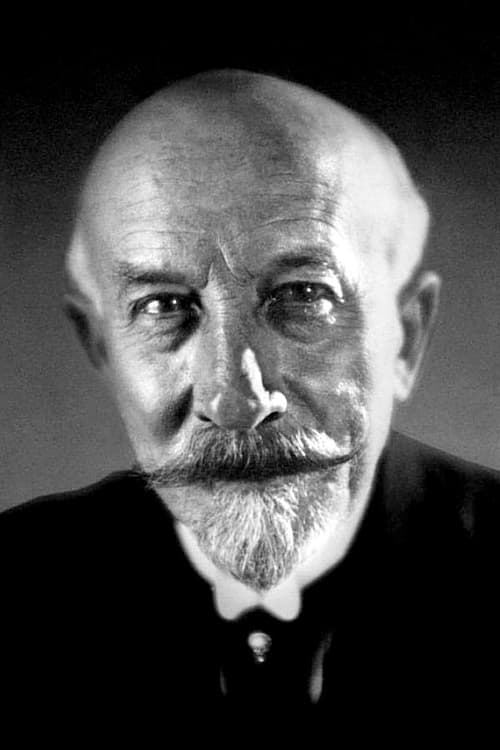
Georges Méliès
Жорж Мельес
atau dikenal sebagai
Riwayat Hidup
Georges Méliès (December 9, 1861 - January 21, 1938), full name Marie-Georges-Jean Méliès, was a French illusionist and filmmaker famous for leading many technical and narrative developments in the earliest days of cinema.
One of the first filmmakers to use multiple exposures, time-lapse photography, tracking shots, dissolves, and hand-painted color in his work, Méliès pioneered effects that would define cinematic special effects for decades to come.
A prolific innovator in the use of special effects, Méliès accidentally discovered the substitution stop trick in 1896, a method of creating seamless disappearing and/or appearing effects used throughout both films and television for decades to come.
Because of his ability to seemingly manipulate and transform reality through cinematography, Méliès is sometimes referred to as the first "Cinemagician".
Two of his best-known films are A Trip to the Moon (1902) and The Impossible Voyage (1904).
Both stories involve strange, surreal voyages, somewhat in the style of Jules Verne, and are considered among the most important early science fiction films, though their approach is closer to fantasy.
Méliès was also an early pioneer of horror cinema, which can be traced back to his Le Manoir du diable (1896).
In early 1909 Méliès stopped making films to protest Thomas Edison's Motion Pictures Parents Company monopoly, and presided over the first meeting of the International Filmmakers Congress in Paris.
Further financial hardships created by his opposition to Edison and diminishing influence, Méliès disappeared from public life.
By the mid-1920s he made a meager living as a candy and toy salesma in Paris, with the assistance of funds collected by other filmmakers.
Although he was recognized for his contributions in cinema, Méliès spent most of his later years in poverty before being accepted into La Maison du Retraite du Cinéma, the film industry's retirement home in Orly.
Info Pribadi
Peran Yang Di Mainkan Georges Méliès
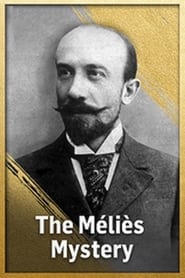 A documentary that details the process...
A documentary that details the process...The Méliès Mystery 2021
A documentary that details the process of restoring 270 of the 520 lost films of pioneering director Georges Méliès, all orchestrated by a Franco-American collaboration between Lobster Films, the National Film Center, and the Library of Congress.
 Part documentary part concert film part...
Part documentary part concert film part...Rolling Thunder Revue: A Bob Dylan Story by Martin Scorsese 2019
Part documentary, part concert film, part fever dream, this film captures the troubled spirit of America in 1975 and the joyous music that Dylan performed during the fall of that year.
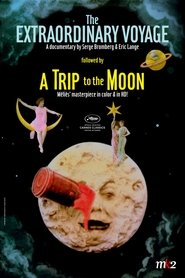 An account of the extraordinary life...
An account of the extraordinary life...The Extraordinary Voyage 2011
An account of the extraordinary life of film pioneer Georges Méliès (1861-1938) and the amazing story of the copy in color of his masterpiece “A Trip to the Moon” (1902), unexpectedly found in Spain and restored thanks to the heroic efforts of a group of true cinema lovers.
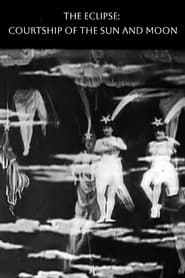 In this film Mlis concocts a...
In this film Mlis concocts a...The Eclipse: Courtship of the Sun and Moon 1907
In this film, Méliès concocts a combination fairy- and morality tale about the foolishness of trying to look too deeply into the workings of an unstable and inscrutable universe. At a medieval school, an old astronomer begins to teach a class of young men, all armed with telescopes, about the art of scrutinising an imminent eclipse. When a mechanical clock strikes twelve, all the young men rush to the windows and fix their telescopes on the heavens.
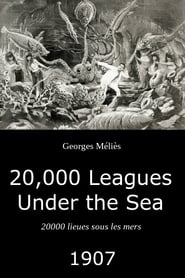 The film a parody of the...
The film a parody of the...20,000 Leagues Under the Sea 1907
The film, a parody of the novel Twenty Thousand Leagues Under the Sea by Jules Verne, follows a fisherman, Yves, who dreams of traveling by submarine to the bottom of the ocean, where he encounters both realistic and fanciful sea creatures, including a chorus of naiads played by dancers from the Théâtre du Châtelet. Méliès's design for the film includes cut-out sea animals patterned after Alphonse de Neuville's illustrations for Verne's novel.
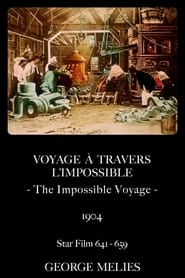 Using every known means of transportation...
Using every known means of transportation...The Impossible Voyage 1904
Using every known means of transportation, several savants from the Geographic Society undertake a journey through the Alps to the Sun which finishes under the sea.
 A Chinese conjurer stands next to...
A Chinese conjurer stands next to...Tchin-Chao, the Chinese Conjurer 1904
A Chinese conjurer stands next to a table, it becomes two tables. A fan becomes a parasol, lanterns appear and disappear. The conjurer spins the open parasol in front of himself, and a dog leaps out from behind it. The dog becomes a woman, then a masked man appears. The conjurer sits them each on a box a few feet apart: suddenly the woman and man have changed places. The disappearing and the transfers continue in front of a simple backdrop.
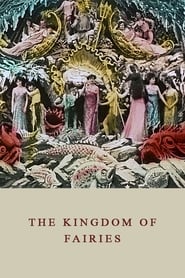 At the royal court a prince...
At the royal court a prince...The Kingdom of the Fairies 1903
At the royal court, a prince is presenting the princess whom he is pledged to marry when a witch suddenly appears. Though driven off, the witch soon returns, summons some of her servants, and carries off the princess. A rescue party is quickly organized, but the unfortunate captive has been taken to a strange, forbidding realm, from where it will be impossible to rescue her without some special help.
 A juggler enters upon the scene...
A juggler enters upon the scene...The Mystical Flame 1903
A juggler enters upon the scene, picks up a skull, throws it into the air, catches it in his hands, where it is transformed into a handkerchief. The handkerchief, after being twirled about a wand, is changed to a napkin, and afterward to a tablecloth. Out of the table cloth comes a servant.
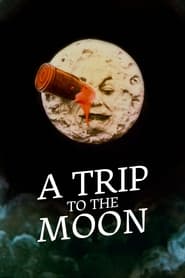 Professor Barbenfouillis and five of his...
Professor Barbenfouillis and five of his...A Trip to the Moon 1902
Professor Barbenfouillis and five of his colleagues from the Academy of Astronomy travel to the Moon aboard a rocket propelled by a giant cannon. Once on the lunar surface, the bold explorers face the many perils hidden in the caves of the mysterious planet.
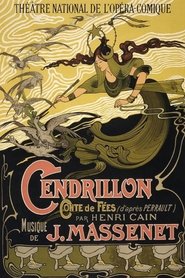 A fairy godmother magically turns Cinderellas...
A fairy godmother magically turns Cinderellas...Cinderella 1899
A fairy godmother magically turns Cinderella's rags to a beautiful dress, and a pumpkin into a coach. Cinderella goes to the ball, where she meets the Prince - but will she remember to leave before the magic runs out? Méliès based the art direction on engravings by Gustave Doré. First known example of a fairy-tale adapted to film, and the first film to use dissolves to go from one scene to another.
 Divers go to work on a...
Divers go to work on a...Divers at Work on the Wreck of the "Maine" 1898
Divers go to work on a wrecked ship (the battleship Maine that was blown up in Havana harbour during the Spanish-American War), surrounded by curiously disproportionate fish.
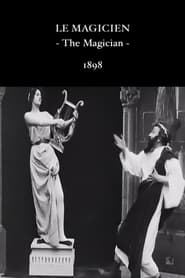 In this scene is shown a...
In this scene is shown a...The Magician 1898
In this scene is shown a magician behind an ordinary table, upon which he suddenly and mysteriously causes to appear a large box, into which he leaps. The sides of the box fall to the ground, but instead of containing the magician a lively clown steps forth who further mystifies the audience by causing the box to disappear, and in its place is seen a fully laid table with a smoking dinner, to which the clown applies himself. The table, however, suddenly disappears much to the astonishment of the clown, who is confronted by the magician in the garb of Mephistopheles. This he suddenly changes to that of a sculptor, and in the background is seen a pedestal with the bust of a young lady, which comes to life as the sculptor applies the mallet and chisel.
 With the cameraman atop a moving...
With the cameraman atop a moving...Panorama from Top of a Moving Train 1898
With the cameraman atop a moving train car the viewer is given a one minute glimpse of a French urban area.
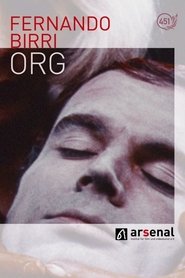 Explores the complex relationship between the...
Explores the complex relationship between the...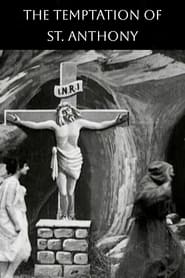 St Anthony is tempted by visions...
St Anthony is tempted by visions...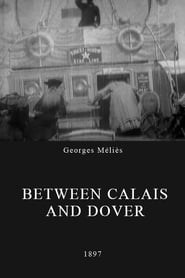 A rocky sea voyage as reenacted...
A rocky sea voyage as reenacted...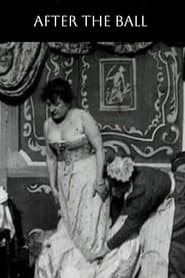 A woman arrives home after the...
A woman arrives home after the... In a medieval castle a dark...
In a medieval castle a dark... Georges Mlis makes a woman disappear...
Georges Mlis makes a woman disappear...